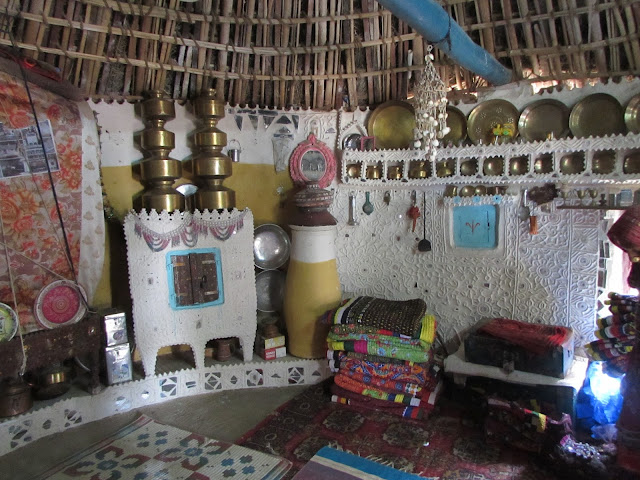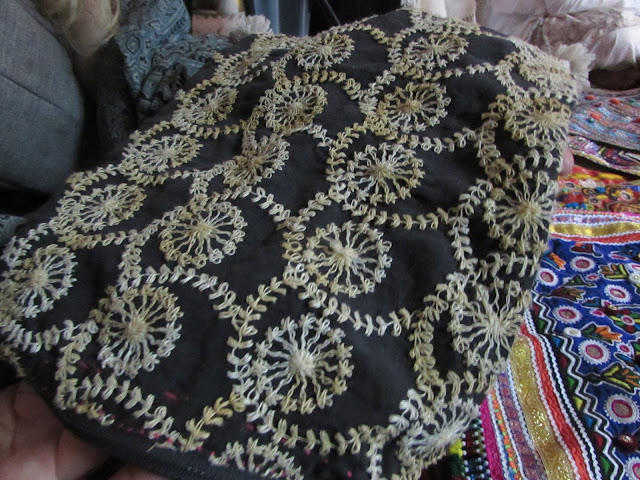The family has lived here for nineteen generations, ruling their kingdom. When India received independence in 1947, the royal families had to give their land to the new state. They were allowed, though, to keep their homes and the adjoining land of their estates. This family had increased its kingdom over the years, and gave up over two thousand square miles. They kept the palace, a beautiful old building that is slowly decaying.
There are hundreds of royal families like this one. Some of them squandered the family money, driving around Europe in Rolls Royces and living a luxurious life. Other families held on to at least some of their fortunes, but maintaining their palaces and supporting the family and the royal way of life is difficult.
This is Amar Jhoti. Not too many years ago we would have been required to refer to him as His Highness. Now, we were told to call him "sir," or "Mr. Singh," or even use his name. Charllotte, who has known him for a long time, calls him Amarji, a nickname based on his two given names.
He is a lovely man, humble with a wry sense of humour. He welcomed us to his home, helped make sure we were comfortable, and gave us a tour of some of the family areas. Many years ago, his family held a meeting to decide who should be in charge of maintaining the family home. His father, the current Maharajah, is a politician and lives in Delhi. Other siblings moved to New York and London. It was decided that the oldest son would be responsible for the family name and estate.
I don't think Amar Jhoti had much choice in the matter. He lives with his wife in Calcutta half the year. His children are grown now, but they and their children often come to stay at the palace. The Rani, his mother, sometimes lives at the palace, too. But maintaining this building is expensive, and like some other royal families, Amar Jhoti has opened much of the palace as a hotel.
Make no mistake, this man is royalty, and will become Maharajah when his father passes. When he delivered our lunch, we were at a village a few miles away. Some of us were watching a demonstration of natural dying, while others were looking through woven items, silk and/or cotton, that were for sale. As soon as the Prince arrived, the villagers stopped what they were doing and focused on his needs. We observed, examined some of dye pots more closely, or picked up another beautiful shawl to consider adding it to our collections, while we were abandoned.
Charllotte brings her India tour group to the palace once a year. When this started, there were fourteen rooms available.
Melissa and I had a bedroom, sitting room, and bathroom.
Each room is different, with different furnishings and views, but all are spacious and comfortable. There is no air conditioning, but ceiling fans help keep the rooms cool. We used mosquito nets, provided by the palace, at night.
This is the hallway leading to the rooms on the second floor.
Below is the room in which we ate. It may have been a servants' dining room in the past, because it was next to the kitchen.
Below is one of the sitting rooms. It holds what Amar Jhoti referred to as, "the elephant in the room." More than a metaphor, this animal was a rogue, which killed people, until his grandfather shot it.
The family used to have their own elephants, which were used for transport and estate work. They still have cattle, and all the yogurt, butter, and other dairy foods we ate came from them.
There is also a golden retriever named Jack, a fat and happy dog.
The Prince is active among the villages of his kingdom. He is especially supportive of local culture, encouraging the different forms of artistic expression. The night we arrived, dance troupes from two villages entertained us.
In these photos, you can see the faded glory of the palace, but there is still beauty and a palpable sense of history. Paintings and photographs of Dao ancestors are everywhere. All the items on display or used in everyday life had stories of their own.
We saw the former audience chamber, where the Maharajah would meet with his people and hear their petitions. The raised platform where the King sat was later turned into the stage, one of the first places in the area where plays and other entertainments were seen.
For centuries, the women of the family were kept in purdah, unable to go outside where they might be seen by other people. Amar Jhoti's grandmother was the first to change this long tradition. She was active in the British Girl Scouts and in 1935, held a jamboree at the palace. She insisted that all the guests be free to roam the beautiful gardens.
Amar Jhoti wants to maintain his family's history and its role in the communities, even as he adapts to the changing times. Our stay was lovely, peaceful and interesting. Charllotte's is the only group that has stayed here, but other travelers come, tourists, researchers, businessmen and others. And when they do, they find a piece of ancient India.
Below is a temple, dedicated to the ten incarnations of the god Vishnu.
This is the outside of the private family area.

















































